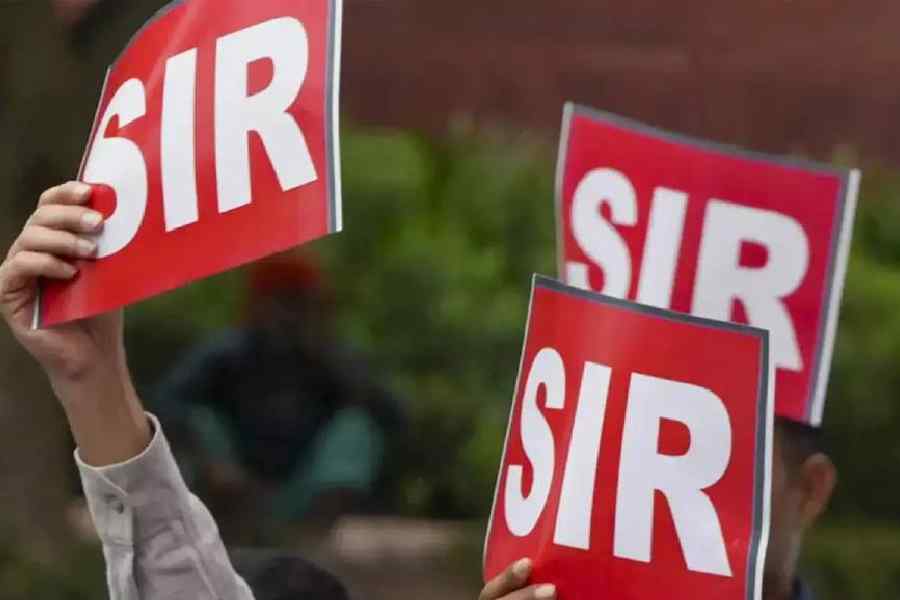 |
Ali Khwaja is facing competition from unexpected quarters. The Bangalore-based psychotherapist was recently counselling a 19-year-old school student. Arvind Rao’s parents, both engineers, were high achievers and complained that he was aimlessly drifting through life, with no interest in academics.
A few months into the counselling programme, Arvind’s mother informed Khwaja that she had found a cure for her son and would not be sending him for any more sessions. She hadn’t moved to another therapist. “A religious guru told her that someone had cast a black magic spell on her son. He said he could undo it with rituals,” says the head of the city-based counselling centre Banjara Academy.
Khwaja is not surprised when he encounters educated, urban Indians who believe in superstition and irrational thought. “I see about three cases every week of educated and aware people becoming victims of such fears and beliefs,” he says.
These, clearly, seem to be inauspicious times for rational and scientific thought in urban India. Sanal Edamaruku would know. The president of the Indian Rationalist Association (IRA) was slapped with three police cases for calling what many saw as a religion-related miracle a poor plumbing job.
A church in Mumbai’s Vile Parle shot into the limelight in March this year when water began dripping from a statue of Jesus Christ on a crucifix that stood at its entrance. “People started flocking to the church, where public prayers were held and the water was distributed. Word spread that a sip of this water could cure anything from cancer to infertility,” Edamaruku says.
When the sceptic did some snooping around, he says he found that capillary action was pushing stagnant water from a nearby lavatory to seep into the pillar where the statue was hoisted. “This is miracle mongering. The water could be infected with bacteria and it’s irresponsible to distribute it,” he says.
Edamaruku appeared on a TV show with maps and charts to scientifically explain the water miracle — but few bought it. Instead, the Mumbai-based Catholic-Christian Secular Forum (CSF) accused him of blasphemy and filed a police complaint against him. “Edamaruku’s anti-Christian bias forced us to go to the cops. We are convinced of his malicious intentions to insult the faith and the clergy,” says CSF spokesperson Joseph Dias.
 |
The rationalist, on the other hand, says the law is being manipulated to silence him. He plans to move the constitutional bench of the Supreme Court to strike down the blasphemy law. “It goes against the fundamental right of freedom of speech and expression,” Edamaruku stresses.
The IRA president may be taking the battle to the highest court, but the rationalism movement seems to be clearly faltering in the face of increasing religious intolerance in India.
Sociologist Ramachandra Guha believes the movement has largely lost its steam. “There was a time when rationalists such as Abraham Kovoor and Bangalore’s H. Narasimhaiah enjoyed a huge following. But now they are being shouted down by religious fundamentalists,” he points out.
Religious intolerance and rationalism, he adds, share a see-saw relationship. “There is a growing climate of religious intolerance all around. Which means anyone who questions faith is squashed,” says Guha.
Khwaja believes the rise of a superstitious outlook and economic prosperity go hand-in-hand in any society. “With money comes a fear of losing it. The sudden affluence of middle-class Indians has brought along new insecurities,” explains the counsellor. “No one bats an eyelid when a celebrity film star or politician goes temple hopping and donates big sums to religious coffers. Now, the same attitude is seeping into the middle-class, in smaller ways,” he adds.
Bangalore-based software engineers Mahesh and Rita Sharma are a case in point. Six months into the wedding, the couple had incompatibility problems and approached Khwaja for counselling. “After a few sessions, Mahesh abruptly announced that he was ending the marriage. He said he had consulted an astrologer — and according to his horoscope his first marriage was doomed,” recalls Khwaja. The Sharmas, who were married last year, have filed for divorce.
Rationalists, however, refute the contention that the movement is slackening. Edamaruku insists that he stays much in the spotlight — being seen and heard regularly by millions of television viewers. “I spent 40 hours on television channels in the last two weeks and featured in 200 news programmes last year,” he says, adding that the numbers of sceptics is also soaring. The IRA has a current member base of 1,10,000 people, he says — up from a few hundred people in the 1990s — and 200 branches across India.
The Federation of Indian Rationalists Association (FIRA) — a parent body for rationalist groups in India — is also reporting healthy progress. “Five years ago, 35 organisations were affiliated to FIRA. It’s increased to 85 today,” says FIRA founder Narendra Nayak. “Although there has been a boom in the business of religion, the rationalism movement has also seen steady growth,” he adds.
Most of this growth, however, has happened in rural India, according to Aditya Mantramurti, founder, Nirmukta, an online community for sceptics in India. “Almost all rationalist groups operate in small towns and villages, where there is a huge problem of charlatan priests and godmen. Only when urban Indians join the sceptic bandwagon will the movement gain visibility and critical mass,” he says.
 |
| VOICE OF REASON: Sanal Edamaruku |
Nirmukta was started to fill this gap. Mantramurti, who works as a software developer with the Bangalore-based IT firm Veveo, had been a passive non-believer since his teenage years. “Religion didn’t matter to me. But I saw the increasing religion-related violence polarise people around me. I wanted to take a stand against it,” he recalls.
Three years ago, Mantramurti along with a few friends started Nirmukta — an online meeting place for atheists. “It’s the only atheist community for urban non-believers,” says Mantramurti, adding that about 7,000 people visit the website every week. The organisation went from being virtual to real when it launched freethinkers’ associations in Mumbai, Delhi, Calcutta, Bangalore and Chennai. “The agenda is to create a community of freethinkers. The associations also provide a support network for those who find it difficult to come out about their atheism,” says Mantramurti.
With 300 members, the Bangalore Freethinkers Association (BFA) is the most populous group at present. Even then, most members prefer to keep their beliefs under wraps, says Dolly Koshy, co-founder, BFA. “They are closet atheists. Religion is not a big thing for many young Indians today — but they don’t trumpet their scepticism because of social and family pressures,” Koshy maintains.
Malini Nair was a covert atheist till two years ago. “I feared becoming a social outcast. Only my family knew I was a non-believer,” says the Chennai-based government employee. When Nair joined the Chennai Freethinkers Association last January, she met more sceptics like her. “We were a group of 15 doctors, IT professionals and a film actor. It boosted me to go public about my atheism,” she says.
Rationalism might be gaining ground, at least when it comes to numbers, but there’s still a long road ahead, Koshy believes. “It’s not an open, forceful movement,” she says. Also, there are unspoken limits till where rationalists can attack religion. “In India, a rationalist cannot talk about God — it could spark huge rage. At best, they can attack godmen and superstitions and promote scientific thought.”
Edamaruku’s battle with the clergy is a new chapter. But, depending on how it ends, it may take the movement further, or bury it some more.










